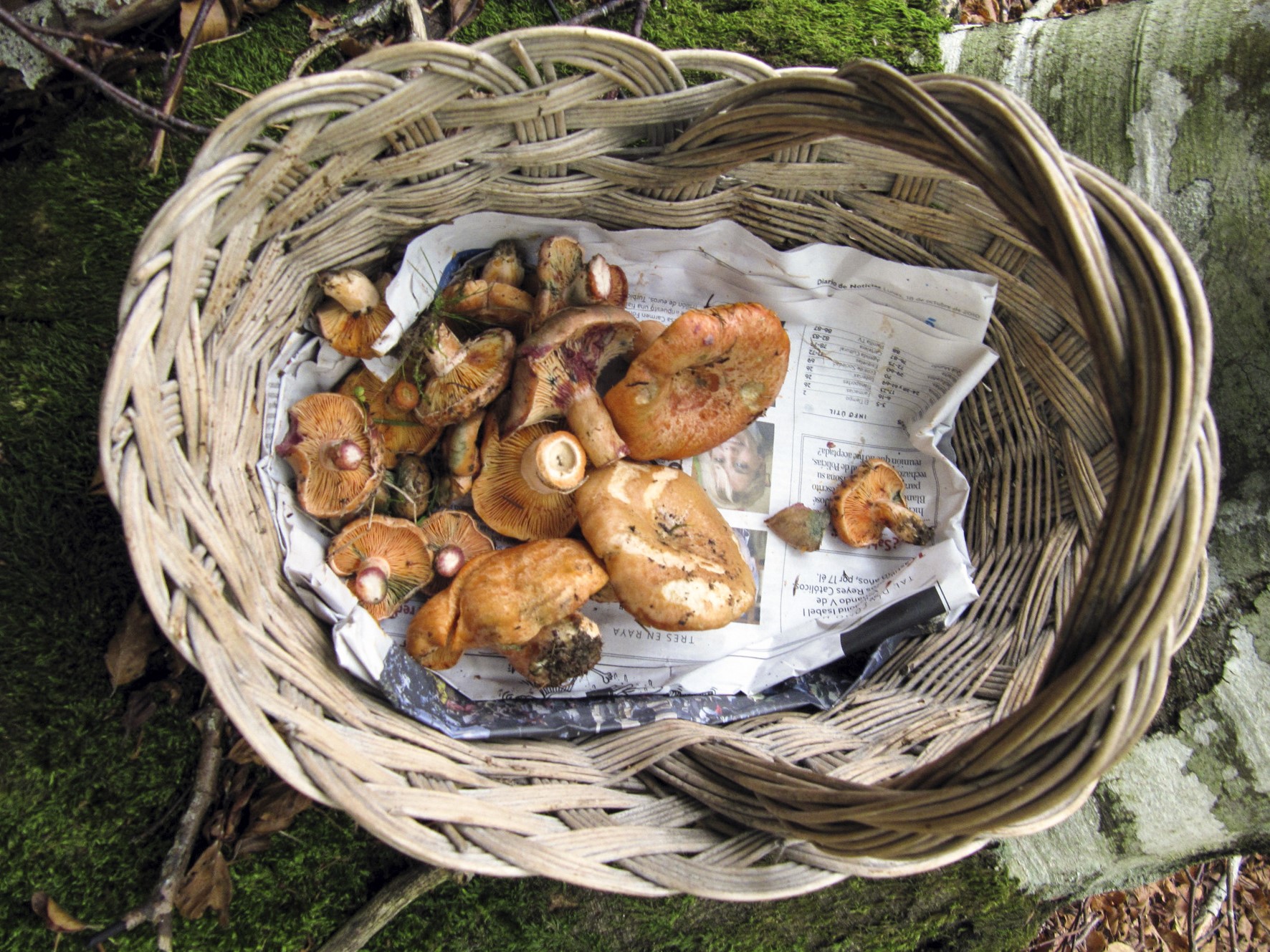Basque ethnography at a glance

Freshly cut saffron milk caps in Laza (Roncal Valley). Pablo M. Orduna.
Before permanently settling down, a nomadic hunter-gatherer system of living and working prevailed in many communities. In the Pyrenees seasonal migratory movement of transhumant herders with their livestock from the bottom of the valleys to mountain heights and from there to the banks of Ebro River still remains as a fading vestige of a former way of life. Yet a number of activities, formerly complementary to the acquisition of necessary food resources, have gained increasing interest, such is the case of hunting and wild mushroom picking, which now return with a renewed focus in terms of leisure and recreation. The impact of mushroom picking alone has indeed been significant, for it has attracted hordes of enthusiasts, a means of financial support to foster local development on the one hand, but potentially damaging to the natural and cultural landscape of the region on the other.
Uztárroz in Roncal Valley was the first locality to provide grounds for hunting and foraging for mushrooms in particular. In the mind of neighbours from all seven villages of the valley, these resources are tightly bound to their cultural surroundings, their knowledge of mycology along with the use of fungi and their spore-producing structures constituting one among several pillars in the process of ethnobotanic adaptation to the environment. Several instances of it remain and a valuable linguistic legacy of vernacular names. Sometimes fungi were used by children as a game element: the wolf’s fart mushroom (otsoputsa, in Basque, or pedo de lobo, in Spanish) that grows on mountaintops in July, for example, was popular with shepherd boys from the valley, as it allowed for a bit of fun while tending the flock.
Mushrooms were mostly for consumption. The wood mushroom (Agaricus silvicola var. Silvícola), known as hongo de fiemo or hongo de majadal , was found beneath dry beech leaves in the autumn. The chanterelle (Cantharellus cibarius), or zizahoria, commonly known as rebochuelo, was another mycological treasure of the season considered an autumnal culinary delight. Flowering at about the same time of the year, the terracotta hedgehog (Hydnum rufescens), or gamuza, called seta de vaca by the inhabitants of the valley, is an edible and widely consumed variety regardless of its name. The grey knight (Tricholoma terreum), hongo parrucho or franciscano, is greatly appreciated in Burgui and Salvatierra de Esca and thus hunted in pine forests. The monk’s head (Clitocybe geotropa) and the clouded agaric (Clitocybe nebularis), or ilarraka, were much sought after further into the season, as winter approached. A multitude of saffron milk caps (Lactarius deliciosus), or hongos royos, crowd the pinewoods of the valley by late summer or early fall. They are collected for own consumption and also sold to Catalan distributors generating substantial revenue. The dark cep (Boletus aereus) and the iodine boletus (Boletus impolitus), both known as boletus beltza, and the penny bun (Boletus edulis), or boletus zuria, are likewise harvested for sale or self-consumption. St George’s spring mushroom (Tricholoma georgii), which locals name usón, is, however, the star mushroom and so precious it is not sold. Despite its small size, the small fairy ring mushroom (Marasmius oreades), txirgile or txargoleta in Basque, was similarly valuable for flavouring many dishes. Finally, the king trumpet mushroom (Pleurotus eryngii), or kardu-ziza, although not regarded as a delicacy nor fit to be sold, was picked for domestic use as a food supplement.
Pablo M. Orduna – Etniker Navarre – Etniker Euskalerria Groups
Virginia Pascual – Co-developer of the Xeingorri project and professor at the International University of La Rioja.
Translated by Jaione Bilbao – Language Department – Labayru Fundazioa
Reference for further information: Family Diet, part of the Ethnographic Atlas of the Basque Country collection.


